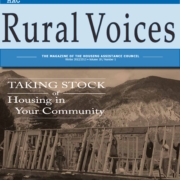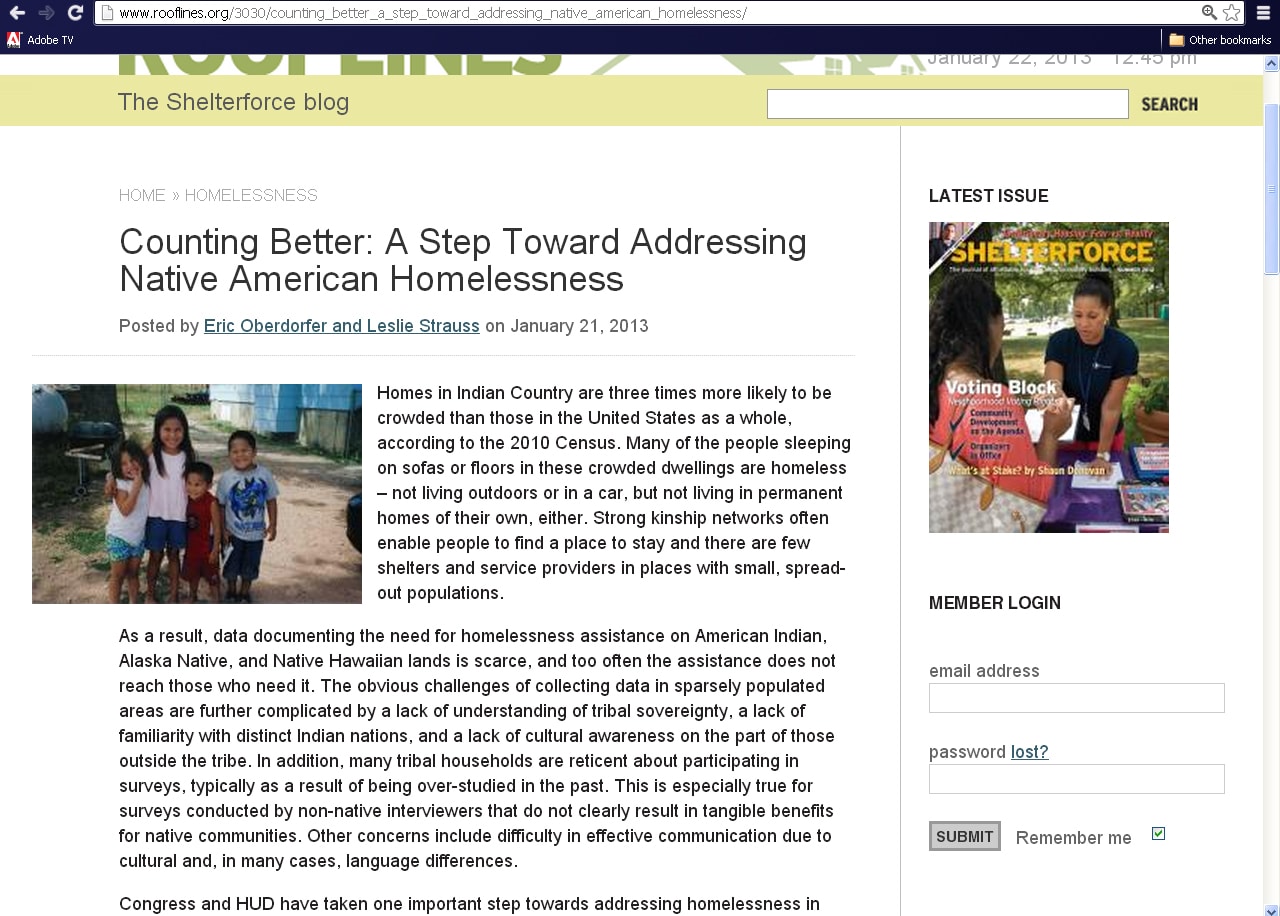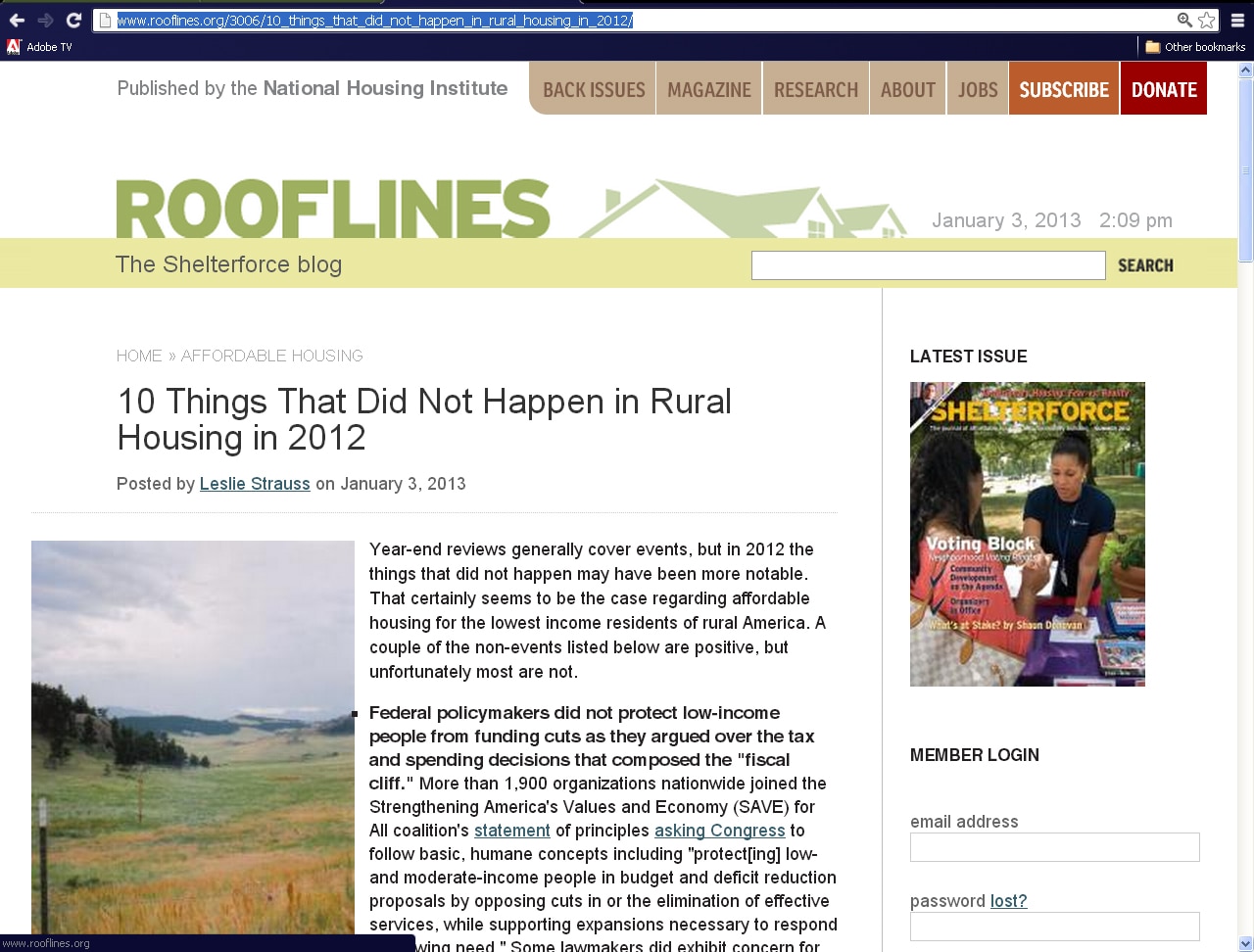HAC News: April 17, 2013
HAC News Formats. pdf
April 17, 2013
Vol. 42, No. 8
• USDA rural housing budget emphasizes loan guarantees • HUD budget proposes cuts for some, increases for others • Senate committee holds hearing on Native American housing • USDA offers IRP funds • HUD sets policy on tenant protection vouchers • Homelessness has decreased in U.S. but increased in some states • Fair Housing Act should be modernized, NFHA says
April 17, 2013
Vol. 42, No. 8
USDA RURAL HOUSING BUDGET EMPHASIZES LOAN GUARANTEES. In the Obama Administration’s budget request for FY14, released on April 10, the Section 502 and 538 guarantee programs remain the focus of rural housing provision. Section 502 direct would fall from $900 million this year to only $360 million in FY14, and Section 515 from $31.3 million to $28.4 million. Increased funding is requested for Section 521 Rental Assistance, but data are not available for those outside USDA to calculate whether the higher amount is enough to renew all expiring contracts. The MPR rental preservation demonstration program would receive a slight increase to $20 million. Section 523 self-help housing would be cut by two-thirds. Section 514/516 farm labor housing and Section 504 home repair loans and grants would be cut by lesser amounts. Congressional appropriations subcommittees are holding hearings on the budget requests. [tdborder][/tdborder]
|
USDA Rural Devel. Prog. |
FY11 |
FY12 |
FY13 |
FY13 |
FY14 Admin. Budget |
|
502 Single Fam. Direct |
$1,121 |
$900 |
$652.8 |
$900 |
$360 |
|
502 Single Family Guar. |
24,000 |
24,000 |
24,000 |
24,000 |
24,000 |
|
504 VLI Repair Loans |
23.4 |
10 |
28 |
28 |
26.3 |
|
504 VLI Repair Grants |
34 |
29.5 |
28.2 |
c |
25 |
|
515 Rental Hsg. Direct |
69.5 |
64.5 |
0 |
31.3 |
28.4 |
|
514 Farm Labor Hsg. |
25.7 |
20.8 |
26 |
d |
23.5 |
|
516 Farm Labor Hsg. |
9.8 |
7.1 |
8.9 |
d |
14 |
|
521 Rental Assistance |
955.6 |
904.7 |
907.1 |
907.1 |
1,015 |
|
523 Self-Help TA |
37 |
30 |
10 |
30 |
10 |
|
533 Hsg. Prsrv. Grants |
10 |
3.6 |
0 |
c |
0 |
|
538 Rental Hsg. Guar. |
30.9 |
130 |
150 |
150 |
150 |
|
Rental Prsrv. Demo. (MPR) |
15 |
2 |
34.4 |
17.8 |
20 |
|
Rental Prsrv. Revlg. Lns. |
1 |
0 |
0 |
0 |
0 |
|
542 Rural Hsg. Vouchers |
14 |
11 |
12.6 |
10 |
12.6 |
|
Rural Cmnty. Dev’t Init. |
5 |
3.6 |
8 |
6.1 |
0 |
a. Figures do not include 0.2% across the board cut. b. Figures do not include 5% sequester or 2.5% across the board cut. c. Total for 504 grants and 533 grants is $33.1 million, the same as in FY12. d. The total budget authority for Sections 514 and 516 is $16.5 million in FY13, compared to $14.2 million in FY12.
HUD BUDGET PROPOSES CUTS FOR SOME, INCREASES FOR OTHERS. Funds would be reduced for CDBG, HOME, SHOP, and Section 811. The Housing Trust Fund would be funded at id=”mce_marker” billion. Increases are proposed for homelessness programs, rental assistance, the Public Housing Operating and Capital Funds, Section 202, Choice Neighborhoods, and housing counseling. VASH vouchers would be continued at $75 million. The budget requests $5 million to fund the new Rural Housing Stability Assistance Program. No funding is requested for the Rural Innovation Fund or its predecessor, the Rural Housing and Economic Development Program.
HUD Program |
FY11 Final |
FY 12 Final Approp. |
FY13 Final Approp.b |
FY14 Admin.’s Proposed Budget |
|
Cmty. Devel. Fund (incl. CDBG) |
3,508 |
3,308.1 |
3,328 |
3,143 |
|
HOME |
1,610 |
1,000 |
1,000 |
950 |
|
Tenant-Based Rental Asstnce. |
18,408 |
18,914.4 |
18,939.4 |
19,989.2 |
|
Project-Based Rental Asstnce. |
9,257.4 |
9,339.7 |
9,339.7 |
9,872 |
|
Public Hsg. Capital Fund |
2,044 |
1,875 |
1,886 |
2,000 |
|
Public Hsg. Operating Fund |
4,626 |
3,961.9 |
4,262 |
4,600 |
|
Choice Neighbrhd. Initiative |
0 |
120 |
120 |
400 |
|
Housing Trust Fund |
0 |
0 |
0 |
1,000 |
|
Native Amer. Hsg. Block Grant |
650 |
650 |
650 |
650 |
|
Homeless Assistance Grants |
1,905 |
1,901.2 |
2,033 |
2,381 |
|
Rural Hsg. Stability Prog. |
— |
c |
c |
5 |
|
Hsg. Opps. for Persons w/ AIDS |
335 |
332 |
334 |
332 |
|
202 Hsg. for Elderly |
400 |
374.6 |
377 |
400 |
|
811 Hsg. for Disabled |
150 |
165 |
165 |
126 |
|
Fair Housing |
72 |
70.8 |
70.8 |
71 |
|
Healthy Homes & Ld. Haz. Cntl. |
120 |
120 |
120 |
120 |
|
Self-Help Homeownshp. (SHOP) |
27 |
13.5 |
13.5 |
10 e |
|
Housing Counseling |
0 |
45 |
45 |
55 |
a. Figures shown do not include 0.2% across the board reduction. b. Figures shown do not include 5% sequester. c. Funded under Homeless Assistance Grants. d. Funded separately before FY14 budget. e. Proposed for specific funding under HOME.
SENATE COMMITTEE HOLDS HEARING ON NATIVE AMERICAN HOUSING. “Identifying Barriers to Indian Housing Development and Finding Solutions” was convened on April 10 by the Senate Select Committee on Indian Affairs. A webcast and copies of witnesses’ written testimony are available online.
USDA OFFERS IRP FUNDS. Nonprofit and public intermediaries can apply for Intermediary Relending Program funds to provide loans to support rural businesses and community development groups. Deadlines are March 29 and June 28. Contact a USDA RD state office for application forms.
HUD SETS POLICY ON TENANT PROTECTION VOUCHERS. HUD Notice PIH 2013-08 tells owners of HUD-assisted properties to notify tenants by May 15 if they intend to apply for vouchers and to apply by June 14. Properties must be in low vacancy areas and their mortgages must have matured or use restrictions expired during FY12. Contact a HUD field office or the Housing Voucher Management and Operations Division, 202-708-0477.
HOMELESSNESS HAS DECREASED IN U.S. BUT INCREASED IN SOME STATES. The National Alliance to End Homelessness’s State of Homelessness in America 2013 report also says the number of people experiencing homelessness as part of a family increased slightly, while the numbers of chronically homelessness individuals and veterans decreased significantly. The report includes data at the state level. Contact NAEH, 202-638-1526.
FAIR HOUSING ACT SHOULD BE MODERNIZED, NFHA SAYS. In its annual fair housing trends report, the National Fair Housing Alliance calls for adding sexual orientation, gender identity, source of income, and marital status to the Act’s protected classes. The data in Modernizing the Fair Housing Act for the 21st Century show that complaints of discrimination on these bases, as well as harassment complaints, have increased.





